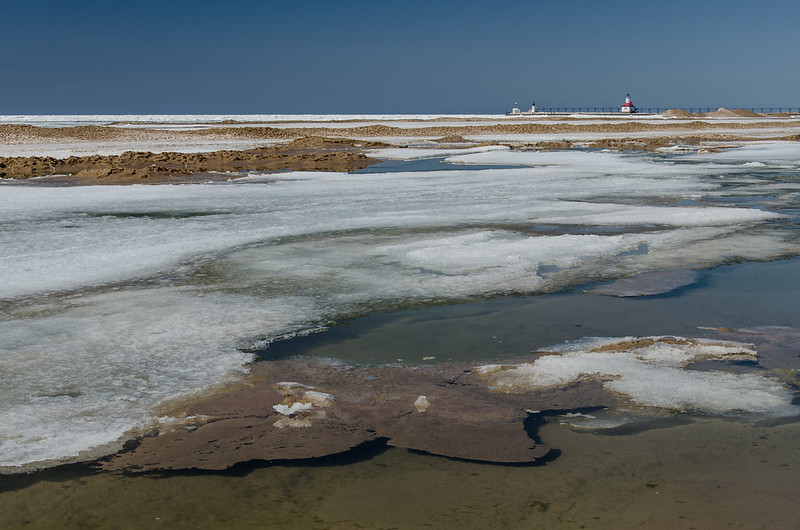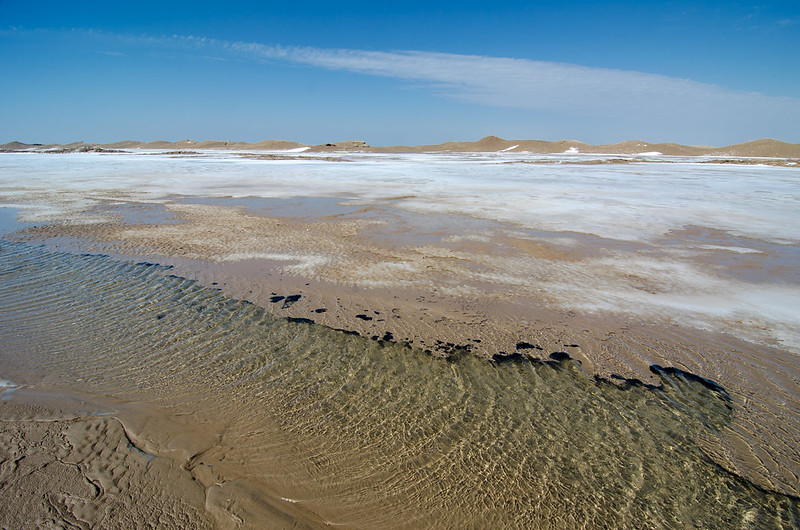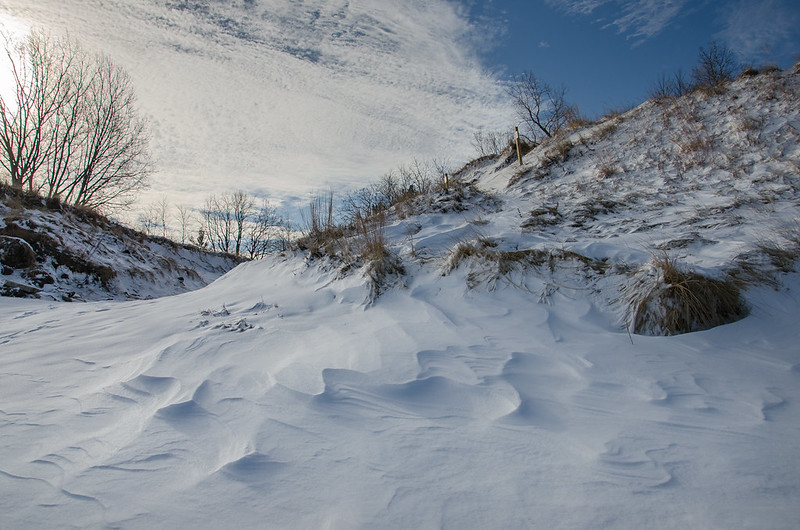
This winter, most of the lakefront access areas I frequent, were closed, preventing me from viewing the frozen lake. The main issue with the closings, was parking- there was nowhere close to park. Having been to these beaches every winter for years, I was determined not to break the streak, so we found the nearest parking area, and hiked in about three miles one way.
It was a relatively warm morning, with stiff winds blowing in, and fading sunshine. We managed to climb the snow covered dune safely (and legally), and were greeted by this view.
Previously, ice covered Lake Michigan as far as the eye could see, but with the recent warm temperatures and high winds, the ice began to break up. The shelf ice, however, isn't going anywhere for some time. From approximately 80 feet above the beach, we could see the extent of the 15 to 20 foot tall shelf ice mounds, and the deep blue, open water.
Well worth the hike and the climb, we experienced the beach in winter - one of my favorite times to visit - with no other people in sight for miles. After capturing photographs, we remained on the ridge for some time, just to soak in the experience.
On to the next place, it was only 8:00 am....




